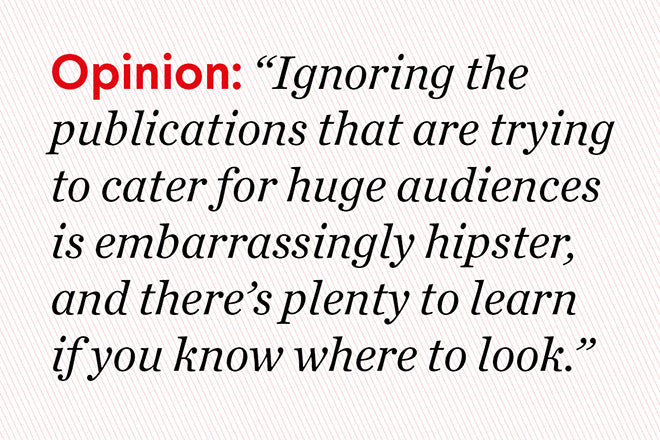
16 proposals for 2016
Monthly guest contributor Rob Alderson marks the new year with a list of 16 things he wants less of in 2016.
It almost seems obligatory to begin January with a New Year’s Resolution inspired post, which may seem like the go-to option for the bleary-eyed writer easing themselves into the exigencies of real life. But chances to take stock are increasingly rare as the year swings into action and so in that spirit, here are 16 things I would like to see less of in 2016 – a personal list of gripes, grievances and pet peeves. I was surprised that getting to 16 wasn’t too difficult, although 55 Things I Would Like To See Less of in 2055 might have been a taller order. Thank goodness by then print will be long gone (KIDDING!)...
1. Obvious rip-offs of existing magazines
Oh great a new magazine! Except it looks an awful lot like... and the tone of the writing is very similar to... and they’ve used exactly the same illustrators as...Oh. Great.
2. 4,000 word pieces that should really be 1,500 words
Not only does the failure to properly edit an article indulge writers (and so, further down the line, make life difficult for other editors) it also disrespects readers.
3. Trite questions in interviews like “Where do you get your inspiration?”
A real bugbear – I maintain that this question has never once elicited an enlightening answer.
4. Self important editor’s letters that make magazine-making sound like humanitarian work.
Making a magazine can be difficult but let’s keep things in perspective. Some editor’s letters read like a missionary’s letter home, all misty-eyed evangelism and stories of self-sacrifice.
5. Discussions about whether print is dead…
It’s not.
6. ..but equally a head-in-the-sand denial that some print products are in trouble
Some are, let’s understand why.
7. Go-to illustrators and photographers being commissioned wherever you look
There seems to be a growing trend to use a small pool of illustrators, photographers and (to a lesser extent) writers across indie titles. It would be great to mix this up a bit.
8. Interview subjects being given copy approval
I heard a few disturbing stories last year of this being done by some very well-respected titles. Yes negotiating access can be tricky, but if the final piece is lobotomized by said subject’s PR team then it’s probably not worth it.
9. Branded magazines that can’t really decide what they want to be
PR tool or genuine editorial vehicle? The catalogue-masquerading-as-magazine doesn’t really work for anyone.
10. Great New York Times Magazine design treatments
With an in-house creative team that includes Gail Bichler, Matt Willey, Kathy Ryan and Jason Sfetko, this is starting to get unfair on everyone else.
11. General smoke-being-blown-up-everyone’s-bum-ery
Lavishing praise where it’s due is lovely (I just did it above) but the lack of honest, critical coverage of the magazine scene is beginning to create a cosy consensus that’s actually quite damaging.
12. Thinly-veiled advertorials
Readers are savvy enough to understand that print costs money. Trying to sneak in paid-for content in whatever form (the coincidental coverage of an advertiser’s product or the brand-heavy photo shoot) is pretty insulting.
13. Reliance on the same few typefaces
The fetishization of typefaces tends to go in cycles (hype-ubiquity-backlash) and I am not advocating ker-azy font choices for the sake of it. It just seems that sometimes everyone’s going for the least offensive options which can become a bit dull.
14. Plodding along
It’s so invigorating when a magazine you’re familiar with changes up – that frisson of delight when you realise that things are not how they used to be. Too many titles, even in the indie world, seem stuck in a rut, churning out the same mag-by-numbers they have been doing for years.
15. A dismissive attitude towards mainstream publishers
I am not saying that famous titles don’t deserve a kicking from time to time but sometimes the attitude towards the big beasts seems willfully perverse. Of course we want to celebrate niche titles, but ignoring the broad-brush publications that are trying to cater for huge audiences is embarrassingly hipster, and there’s plenty to learn if you know where to look.
16. Failure to live up to the indie tag
It was put to me recently that indie has become the new mainstream, crippled by a self-perpetuating creative conservatism. Independence means freedom and if we’re not revelling in that, then we’re doing it wrong.


